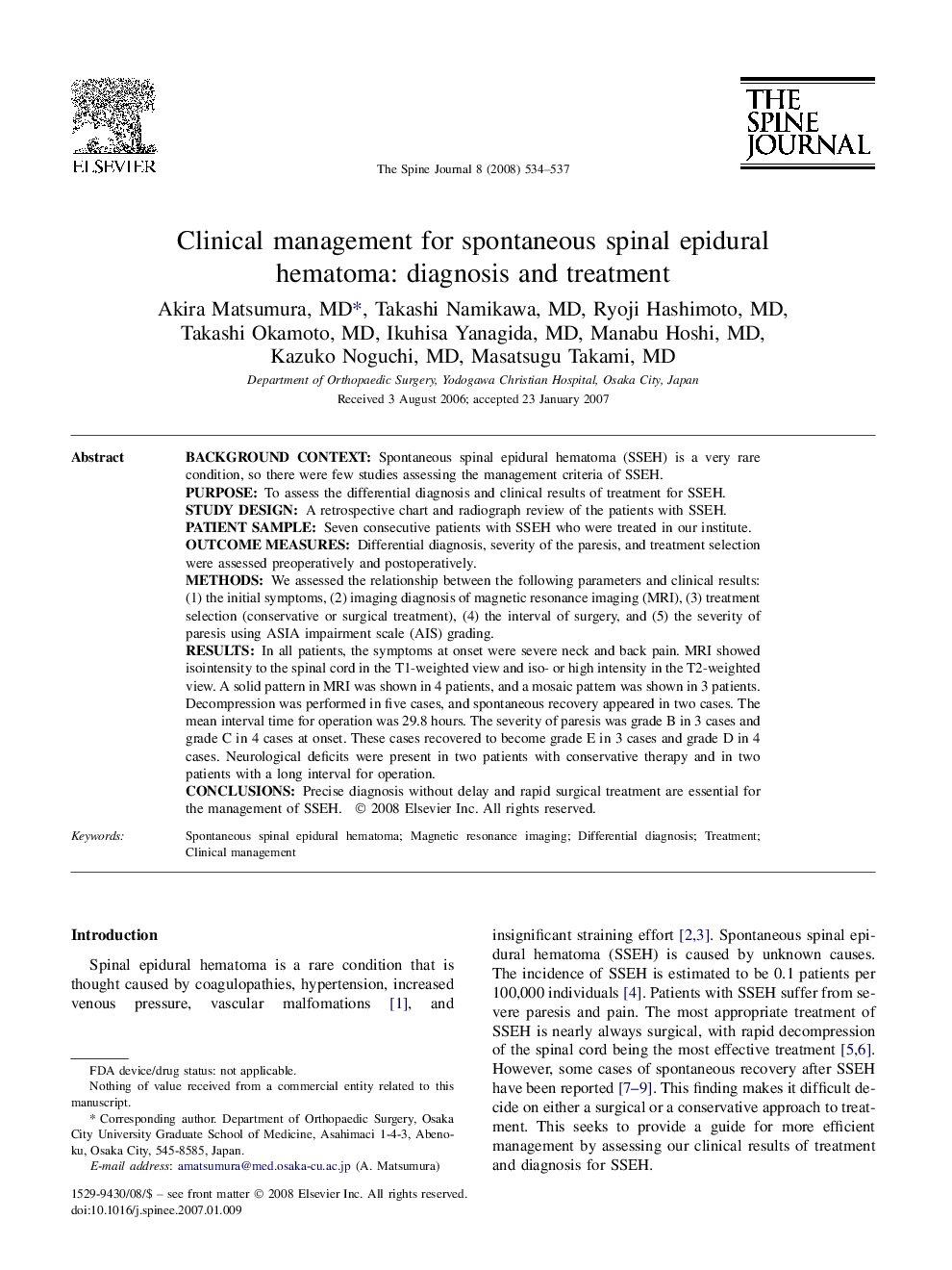| Article ID | Journal | Published Year | Pages | File Type |
|---|---|---|---|---|
| 4099793 | The Spine Journal | 2008 | 4 Pages |
Background contextSpontaneous spinal epidural hematoma (SSEH) is a very rare condition, so there were few studies assessing the management criteria of SSEH.PurposeTo assess the differential diagnosis and clinical results of treatment for SSEH.Study designA retrospective chart and radiograph review of the patients with SSEH.Patient sampleSeven consecutive patients with SSEH who were treated in our institute.Outcome measuresDifferential diagnosis, severity of the paresis, and treatment selection were assessed preoperatively and postoperatively.MethodsWe assessed the relationship between the following parameters and clinical results: (1) the initial symptoms, (2) imaging diagnosis of magnetic resonance imaging (MRI), (3) treatment selection (conservative or surgical treatment), (4) the interval of surgery, and (5) the severity of paresis using ASIA impairment scale (AIS) grading.ResultsIn all patients, the symptoms at onset were severe neck and back pain. MRI showed isointensity to the spinal cord in the T1-weighted view and iso- or high intensity in the T2-weighted view. A solid pattern in MRI was shown in 4 patients, and a mosaic pattern was shown in 3 patients. Decompression was performed in five cases, and spontaneous recovery appeared in two cases. The mean interval time for operation was 29.8 hours. The severity of paresis was grade B in 3 cases and grade C in 4 cases at onset. These cases recovered to become grade E in 3 cases and grade D in 4 cases. Neurological deficits were present in two patients with conservative therapy and in two patients with a long interval for operation.ConclusionsPrecise diagnosis without delay and rapid surgical treatment are essential for the management of SSEH.
